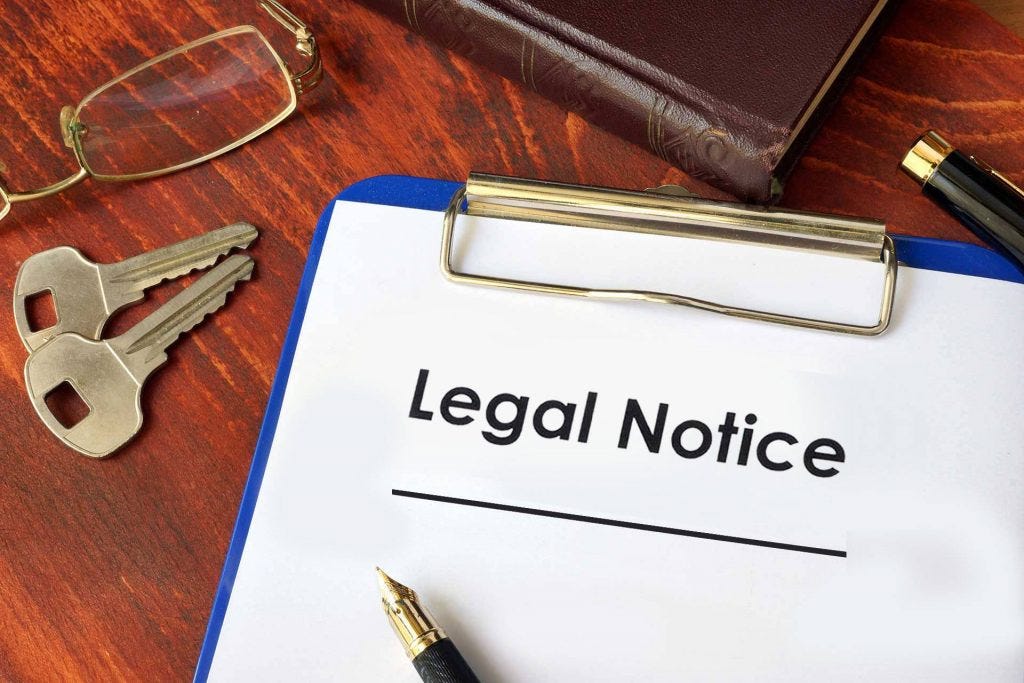A Comprehensive Guide on How to Draft a Legal Notice

Introduction
In the complex web of legalities that govern our daily lives, there are times when disputes arise, and individuals or entities find themselves in need of a formal communication to address grievances or seek resolution. This is where a legal notice plays a crucial role. A legal notice is a formal document that communicates a party’s intention to take legal action or resolve a dispute before escalating the matter further. In this blog, we will delve into the intricacies of drafting a legal notice, providing a step-by-step guide for those navigating the often-daunting legal landscape.
Understanding the Purpose:
Before embarking on the drafting process, it is essential to understand the purpose of a legal notice. Essentially, it serves as a warning shot, giving the opposing party an opportunity to rectify the situation or respond before legal proceedings commence. Whether it’s a contractual dispute, property matter, or any other civil issue, a well-drafted legal notice can be a powerful tool in resolving conflicts amicably.
Step 1: Identify the Recipient and Jurisdiction
The first step in drafting a legal notice is identifying the recipient and determining the appropriate jurisdiction. Clearly specify the name and address of the individual or entity to whom the notice is addressed. Additionally, ensure that the jurisdiction mentioned is accurate, as legal matters vary from one region to another.
Step 2: State the Facts Clearly
Clarity is paramount when it comes to drafting a legal notice. Begin by stating the facts concisely and objectively. Avoid unnecessary details or emotions, and focus on presenting a clear and accurate account of the situation. This lays the foundation for a well-structured and compelling legal notice.
Step 3: Specify Legal Grounds and Relevant Laws
Clearly outline the legal grounds on which the notice is based. Whether it involves a breach of contract, property dispute, or any other matter, reference the relevant laws and regulations that support your position. This not only adds credibility to your notice but also provides a framework for the recipient to understand the legal implications.
Step 4: Outline the Relief Sought
In this section, clearly articulate the relief or remedy you are seeking. Whether it’s a demand for compensation, performance of a contractual obligation, or any other specific action, be explicit about your expectations. This helps in setting clear expectations and can potentially pave the way for a resolution without resorting to legal proceedings.
Step 5: Include a Deadline for Response
To convey the urgency of the matter, include a reasonable deadline for the recipient to respond. This deadline serves as a timeline for resolving the issue amicably before pursuing legal action. Ensure that the timeframe is realistic and allows the other party sufficient time to address the concerns raised in the notice.
Step 6: Draft in Professional Language
Maintain a professional and formal tone throughout the legal notice. Use clear and concise language, avoiding unnecessary jargon that may confuse the recipient. A well-articulated legal notice not only reflects your seriousness about the matter but also enhances its effectiveness.
Step 7: Seek Legal Assistance if Needed
If the legal issues involved are complex or if you are unsure about the drafting process, it is advisable to seek legal assistance. Consulting with an attorney can provide valuable insights and ensure that your legal notice adheres to all applicable laws and regulations.
Let us understand few Key aspects of the legal notice:
1. Signature:
The legal notice should be signed by the sender or their authorized representative. If an attorney is involved, the notice can be signed by the attorney on behalf of the client.
Handwritten or Digital Signature: Traditionally, legal notices are signed manually. However, with the advent of technology, digital signatures are becoming increasingly acceptable, provided they comply with the Information Technology Act, 2000.
In case of multiple parties on the sender’s side, each party should sign the legal notice
2. Stamping:
Stamp Paper Requirement: While legal notices do not necessarily need to be on stamp paper, certain legal documents and agreements in India require stamp paper of a specified value. However, for legal notices, a plain paper is generally acceptable.
Stamp Duty Implications: The stamp duty is usually associated with agreements and contracts rather than legal notices. It’s crucial to differentiate between the two. If the legal notice is part of a settlement agreement, the stamp duty may be applicable.
3. Content of the Legal Notice:
Specifics in the Signature: The signature should be accompanied by the sender’s name, designation (if applicable), and contact details.
Authorized Signatory: If the notice is being sent on behalf of a company or organization, the person signing should be authorized to do so, either through a power of attorney or an official resolution.
4. Notarization:
Optional but Recommended: While not mandatory, getting the legal notice notarized can add an extra layer of authenticity. A notary public can attest to the signature and identity of the person signing the document.
5. Delivery Confirmation:
Modes of Delivery: The legal notice can be sent through various modes such as registered post, courier, or even by hand. Ensure to retain proof of delivery, like an acknowledgment receipt.
Electronic Communication: If sending the notice via email, ensure that the recipient acknowledges receipt. In some cases, it might be advisable to send a hard copy as well.
6. Consultation with Legal Experts:
Review by Lawyers: Before sending out the legal notice, it is always advisable to have it reviewed by a legal professional to ensure it adheres to all legal requirements and effectively conveys the intended message.
7. Response Time:
Acknowledgment of Receipt:
When drafting the legal notice, stipulate a reasonable time frame within which the recipient should respond. This is crucial for establishing the sender’s willingness to resolve the matter amicably before resorting to legal action.
Conclusion
Drafting a legal notice is a strategic and essential step in the legal process. It serves as a prelude to potential legal proceedings, giving parties an opportunity to resolve disputes amicably. By following the steps outlined in this guide, individuals and entities can navigate the intricacies of drafting a legal notice with confidence and clarity. Remember, precision and professionalism are key when communicating through legal channels, and a well-drafted legal notice can be a powerful tool in achieving resolution and justice.


